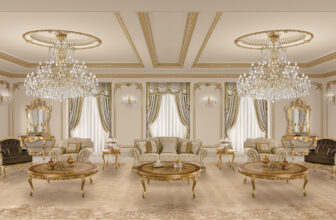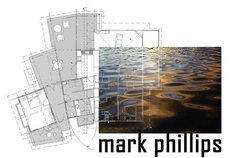Paradigm Architects
Paradigm Architects is an award winning practice committed to furthering regionally specific, environmentally responsive architecture throughout Western Australia. We seek to imbue our buildings with a unique sense of identity responding to place, building users, local environment, climatic conditions, historical context and regional considerations. We seek to find design solutions that will address the functional and aesthetic requirements also meet the aspirations of the building users and the community as a whole, engendering a sense of ‘ownership’ and ‘place’. From regional sites to the city, our work responds to the local environmental conditions and the requirements of our clients.
Driving directions to Paradigm Architects on map
Paradigm Architects on Google Maps
Projects:
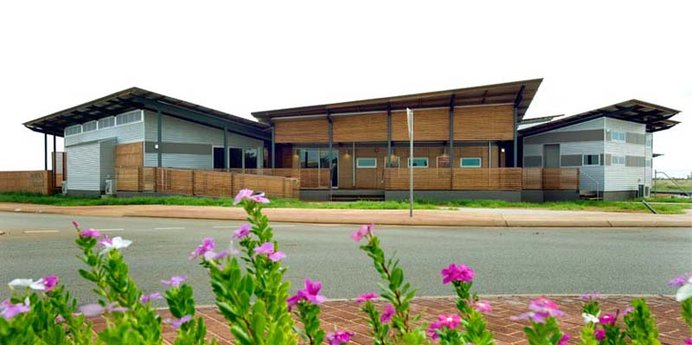
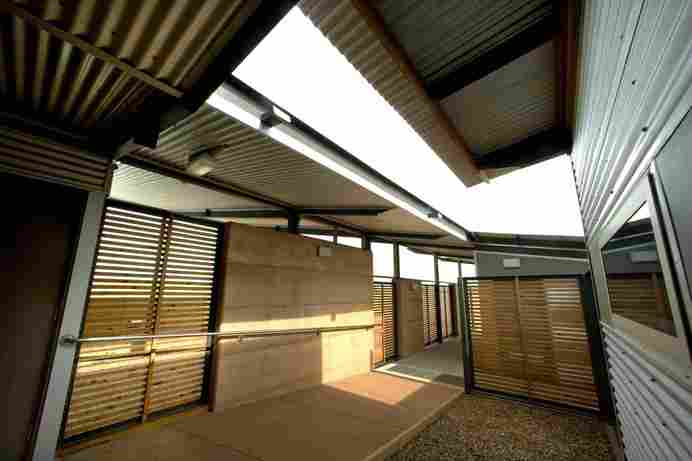
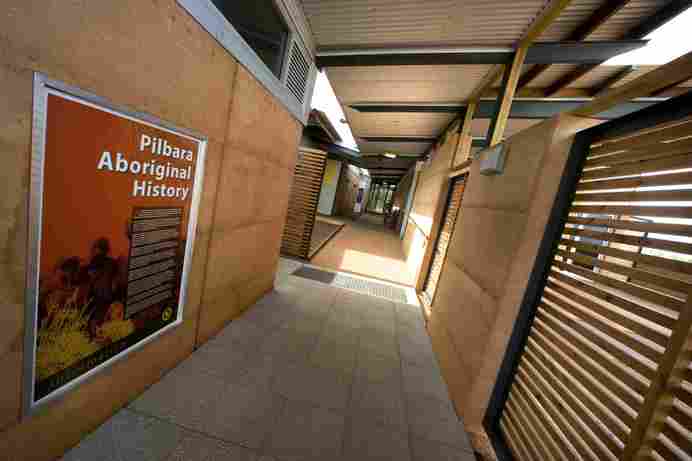
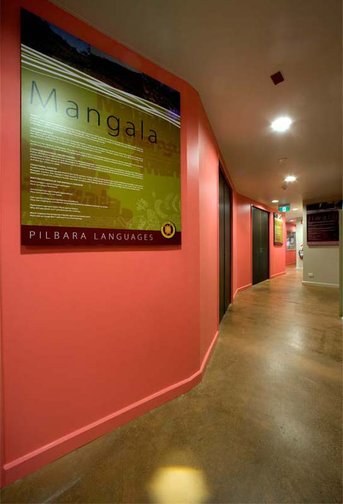
Wangka Maya Pilbara Aboriginal Language Centre
South Hedland, 2007
The Language Centre project was undertaken on behalf of the Wangka Maya Pilbara Aboriginal Language Centre which undertakes the role of recording and preserving the aboriginal languages of the Pilbara region. This work is crucial to the preservation of the cultural heritage of the Aboriginal communities throughout the region and as such the brief required that the building reflect the unique Pilbara environs to bring these communities together in a physical sense. A shaded breezeway element connects the various pavilion elements with the use of raw concrete flooring, rammed local earth walling and shade elements providing a feel of the cool gorges cut into the Pilbara landscape. The key element of the design approach to the building was an inclusive consultation process with the organisation and community members including involvement in the development of the design brief and building form. This project was completed in 2007 and was awarded the RAIA Commercial Architecture Award in 2008.
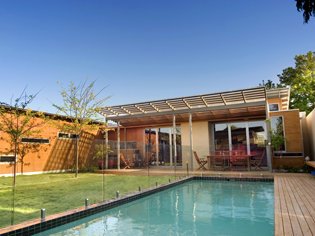
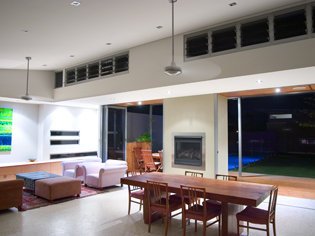
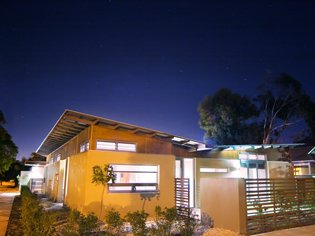
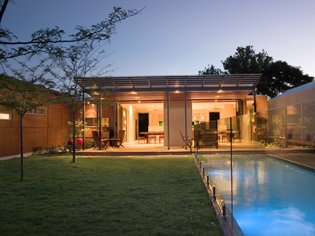
Willis Street Residence
Mosman Park WA, 2008
This residence was designed to be appropriate to the corner site incorporating passive thermal design principles and was required to accommodate a number of artworks and objects collected by the client whilst living over seas. There was an express desire for the residence to have a strong connection between internal and external spaces and to facilitate an enjoyment of outdoor living throughout the year. The house form responds to the environmental conditions and constraints of the site with a heavy masonry wall wrapping around the dwelling to provide a sense of enclosure and separation from the surrounding streets. The courtyard house typology echoes this sense of enclosure, wrapping around the site to create a central space that forms the main outdoor living area. The courtyard provides a functional external living ‘room’ and permits the residence to have the desired strong visual and physical connection to the external ‘living’ and garden spaces with the living/ dining pavilion flowing out into the courtyard. This layout maximizes access to northerly sun to both internal and external living spaces and provides a sense of both visual and acoustic privacy from the surrounding streets.
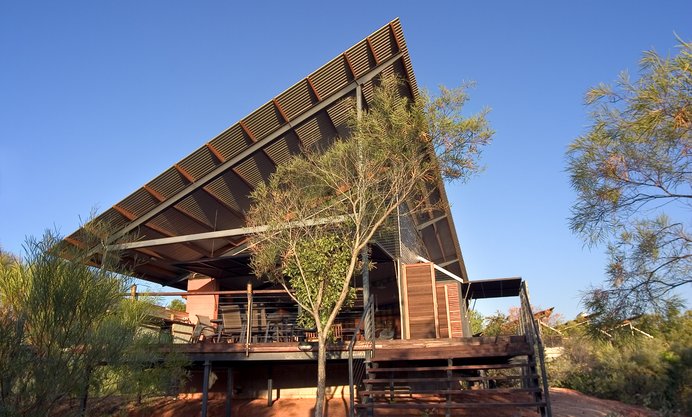
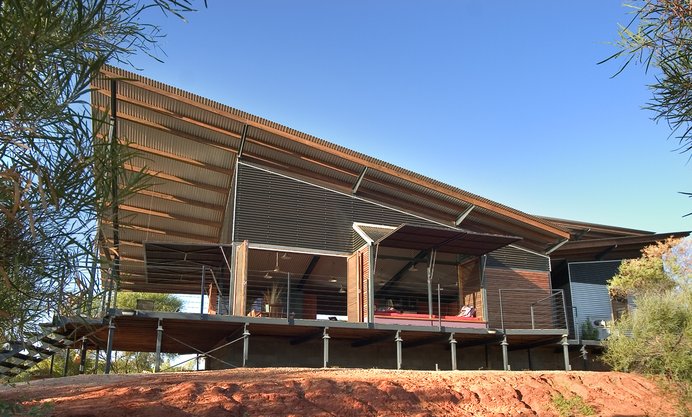
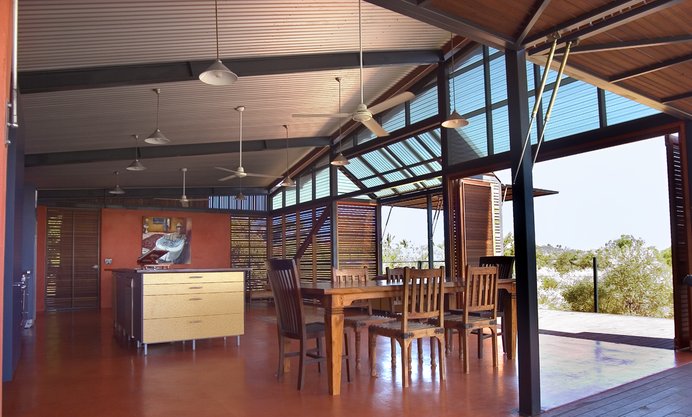
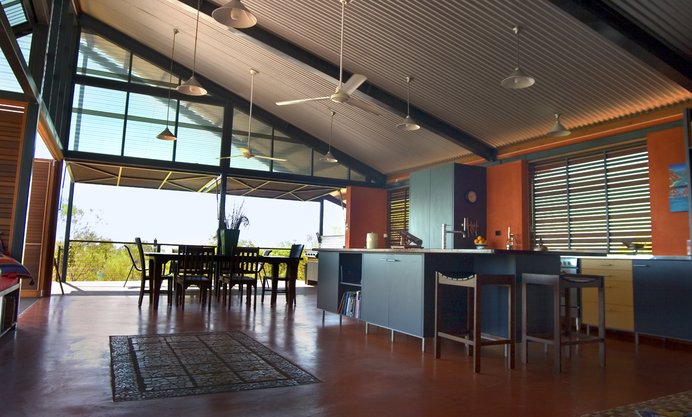
Coco Eco Tourism Accommodation
Broome WA, 2005
CocoEco sits within the natural landscape forms in response to a desire to minimise the visual impact of the building on the surrounding environment. The dynamic ‘butterfly’ roof form forms a significant part of the architectural statement while facilitating breeze flow and escape for any warm air build up. The project is located at Coconut Wells outside Broome where the ‘pindan’ meets the coast on a site that retains the remnants of a mango farm and preserved natural coastal vegetation. The project sought to provide a unique ‘natural’ setting for tourists and local visitors alike to experience an introduction to the Kimberley region. This project implemented the revegetation and rehabilitation of the natural landscape and habitats to encourage the retention and return of indigent species of both flora and fauna to the site. The accommodation consists of a series of pavilions linked by decks stretching from east to west, with a view towards a natural tidal lagoon and further over the sand dune formation to Cable Beach. This lagoon provides a significant habitat for coastal birdlife attracting migrating birds at certain times of the year. All pavilions are oriented to capture the prevailing cooling breezes with strong visual and physical connections to the surrounding environment.



